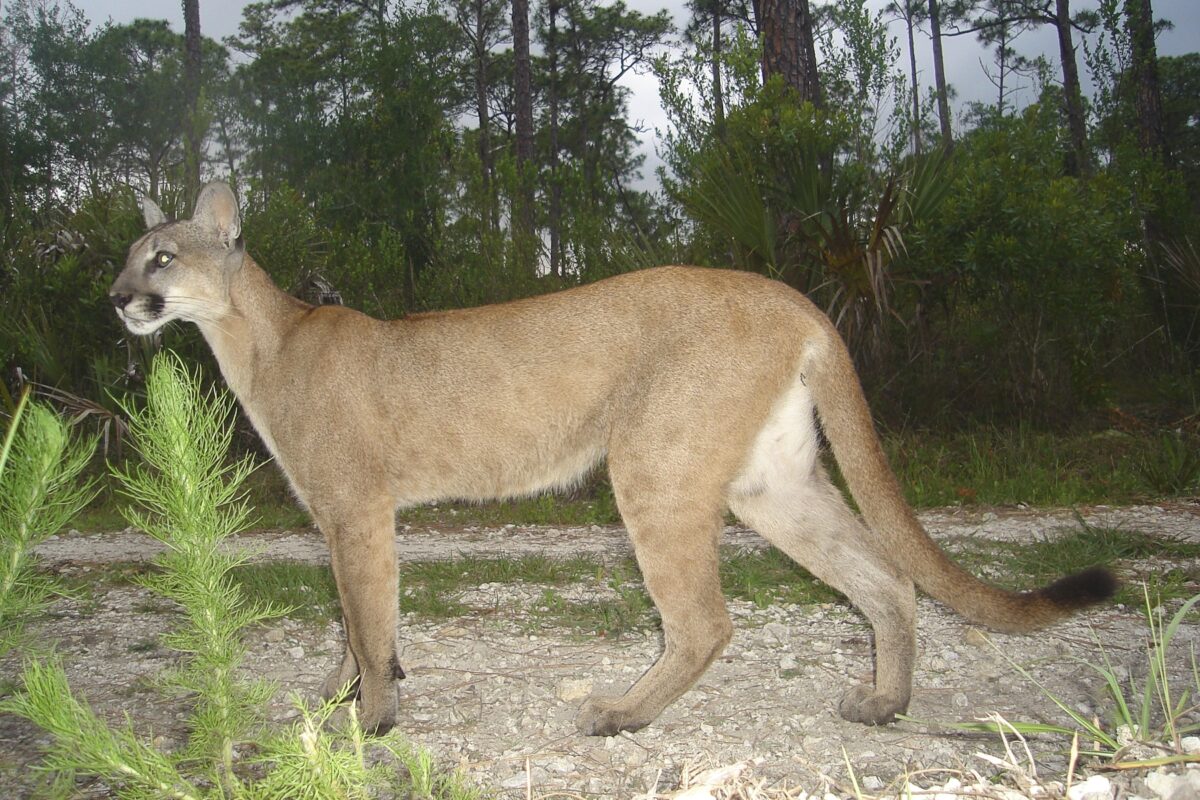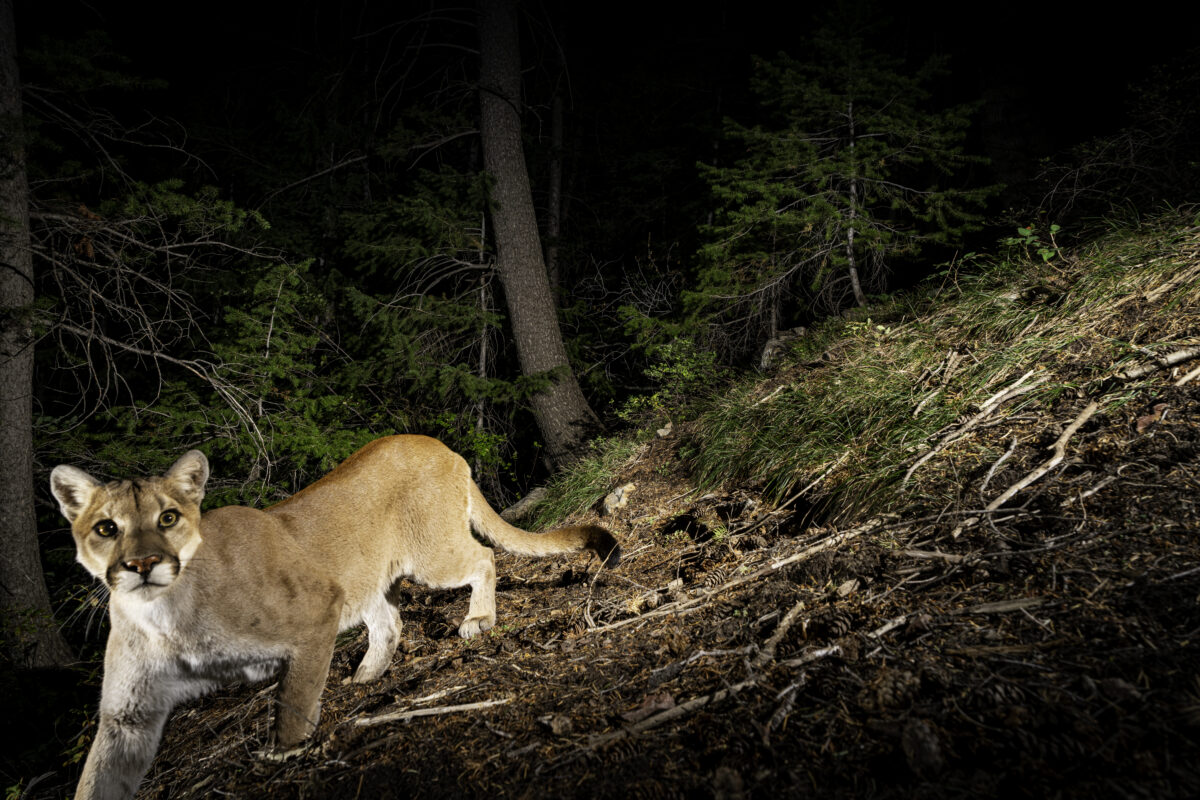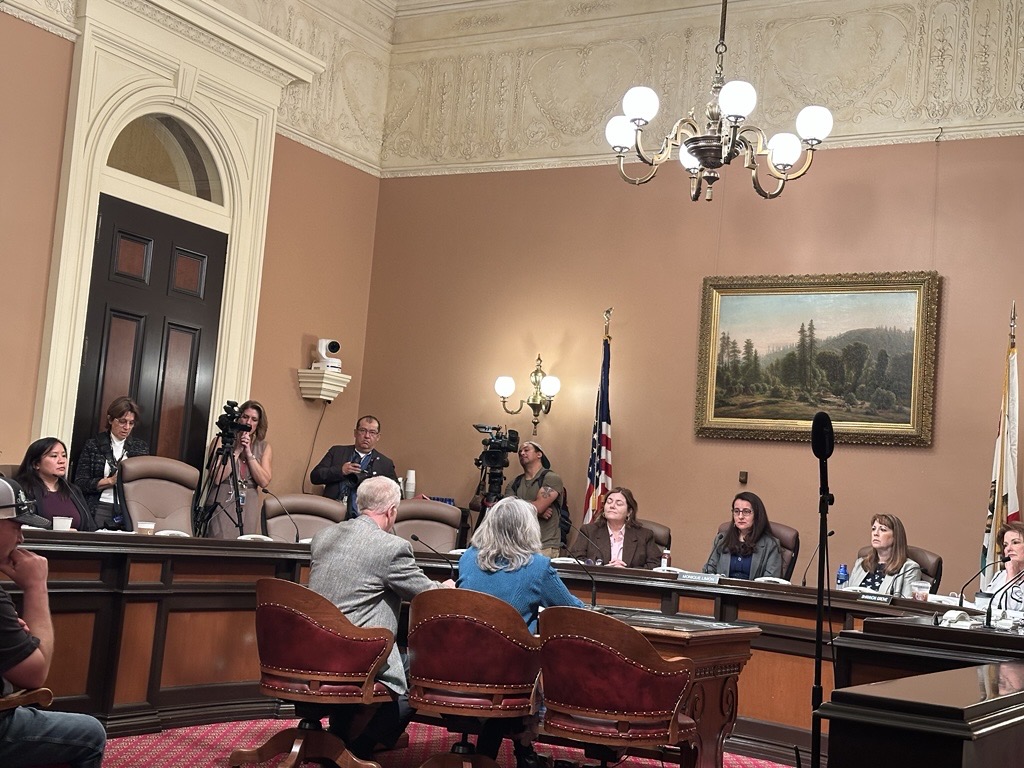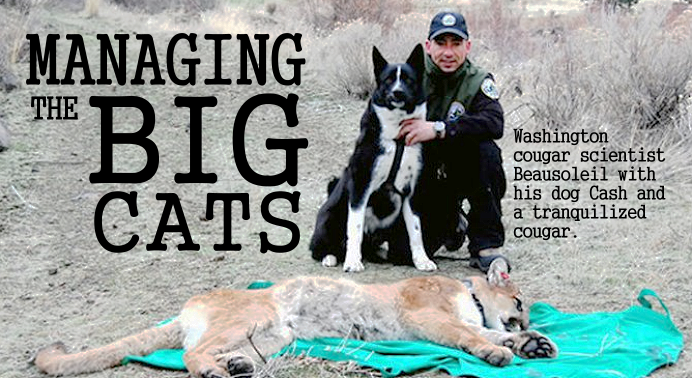
Guest Commentary by Ann McCreary, Methow Valley News
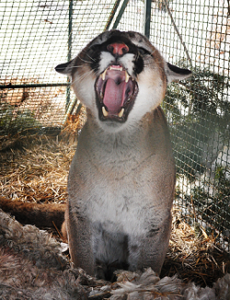
The research has revealed that cougar populations are naturally self-controlling because cougars are extremely territorial. Taking that into consideration, state wildlife officials are implementing an innovative hunting and management strategy that is generating widespread interest from wildlife managers and biologists.
“The concept of thinking about cougars’ social system and how they interact, in terms of management, is something that has never been done before,” said Rich Beausoleil, cougar and bear specialist for Washington Department of Fish and Wildlife.
Over a 13-year period, Beausoleil led three of six cougar research projects in Washington, including Okanogan County, and is the lead author on a scientific article to be published this fall or winter in the Wildlife Society Bulletin. The research project also studied cougar populations near Issaquah, Cle Elum, Kettle Falls, Republic and the Blue Mountains.
The peer-reviewed article, called “Research to Regulation: Cougar Social Behavior as a Guide for Management,” describes an approach to managing cougars “founded on their behavior and social organization… that should promote population stability.”
Although the article has not appeared in print yet, Beausoleil said he’s receiving calls from wildlife biologists and policy makers who have heard about his research and are interested in learning more.
“This is pretty groundbreaking stuff, and it’s going to generate quite a bit of discussion in the scientific community,” Beausoleil said in an interview Monday (July 29). “Folks from around the U.S. have contacted me, a researcher from Sweden, and most recently a reporter from National Geographic.”
Science-based Strategy
The goal of the research — one of the longest-running studies of cougars ever conducted — is to develop a management strategy that is based on science, rather than politics, as it has often been in the past, Beausoleil said.
A ban on using dogs for hunting cougars approved by Washington voters in 1996 prompted the introduction of 16 legislative bills addressing cougar management over the past 15 years.
The basic idea of the state’s new management approach, Beausoleil said, is based on cougars’ social system and territorial nature. Adult cougars, especially males, have a natural drive to establish, patrol and defend a territory. If another cougar enters that territory, the cougar will fight to the death to defend it.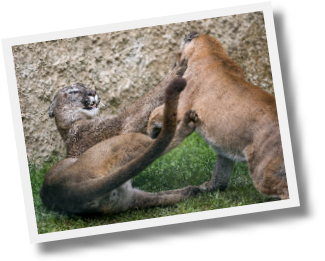
“The No. 1 cause of death in the wild is cougars killing cougars,” Beausoleil said. “The strongest ones and the ones with the best genes survive.”
If an adult male cougar dies or is killed — by a hunter, for instance — the territory is left undefended and younger male cougars will move in. Often two or more younger cats enter the territory formerly occupied by a single adult male.
Because cougars don’t develop their territorial instincts until they are about 4 years old, the younger cougars may occupy overlapping ranges for a few years, resulting in a higher local cougar population, and increasing the potential for interactions with livestock and humans.
“One of the reasons cougars may come into conflict with humans is if you take out a territorial male, you have just increased the odds [of cougar encounters]. Instead of one you now have three cougars,” Beausoleil explained.
“If you live in one of those areas where a male was removed, instead of seeing one, now your potential is to see three or four because those animals are too young to defend their home range. Now you’re thinking, ‘Holy smokes, the cougar population really exploded.’ It really hasn’t, it’s a temporary chaotic condition.”
The Wildlife Society article notes that “increased hunting may not always result in reduced local densities of cougars… instead, increased hunting may result in compensatory immigration by mainly young males.”
“If this occurs on a large scale it will take two or three years before the area stabilizes again,” and the younger cougars reach the age where they begin killing each other, Beausoleil said. “We want to try to manage cougars more responsibly and preserve the older age structure that is so important.”
Studying Habits
The concept is not necessarily intuitive, Beausoleil said. He sometimes receives calls from ranchers who report seeing a cougar on their land and want Beausoleil to come kill it.
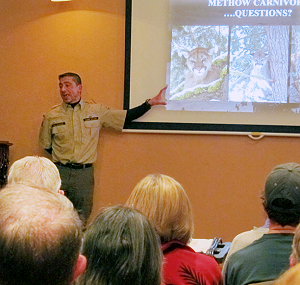
“I ask why. And sometimes they say because they’ve seen it every year. I tell them, ‘He’s probably the best insurance you have against potential conflict because he’s keeping all the other cats away. When you have one cougar who knows how to live around people, why take that one out and open it up to two or three males? Let them help you.'”
In stable cougar populations, Beausoleil and other researchers have discovered very predictable densities of 1.7-2.0 adults per 100 square kilometers. In addition, research in Washington found that the cougar population would increase by about 14 percent per year without hunting.
To apply research findings to wildlife policy, Beausoleil and his fellow researchers used satellite telemetry from 117 radio-collared cougars in five study areas in Washington to identify habitats used by the marked cougars. They extrapolated these habitats throughout the state, and did on-the-ground assessments to verify likely habitats.
Past hunting management policies designated large game management units where objectives were to decrease or increase the cougar population. In areas easily accessible to hunters within those management units, greater numbers of cougars were taken, while few were taken in less accessible areas.
Using the habitat information, state wildlife officials last January established smaller “cougar management zones” created to “distribute the harvest more equitably across the landscape… [while] preserving the social stability across the whole state.” Rather than 13 large game management units, the state designated 49 smaller cougar management zones.
The state also established a harvest “threshold” of 14 percent of the estimated population in each cougar management zone, to preserve the stability of the population.
State wildlife officials have also instituted a 24-hour reporting and information hotline, allowing officials to quickly close management zones that reach the harvest threshold.
In addition to distributing the cougar harvest more evenly, smaller management zones provide a benefit to hunters, Beausoleil said. “When one [zone] closes a hunter can go right next door. Hunters are happy because it’s not a giant area that is closing,” he said.
The resulting harvest of 150 cougars last year, Beausoleil said, is “similar to the five-year average,” but distributed more equally across the management zones.
The data-driven approach to cougar management also appeals to the non-hunting public and conservationists, Beausoleil said. “They want to know management is responsible and scientifically credible,” he said. “They want to make sure their dollars are being spent responsibly.”
“A simple, consistent, science-based approach to cougar management,” the Wildlife Society Bulletin article said, “can be of benefit to agencies during intervals of administrative and political uncertainty.”
Beausoleil said the cougar studies may also be relevant to another controversial carnivore in Washington. “These research findings may also be applicable for wolf management in the future, because they’re highly territorial as well,” he said.
Copyright Methow Valley News. Reposted with permission.




 Facebook
Facebook Twitter
Twitter Send Email
Send Email